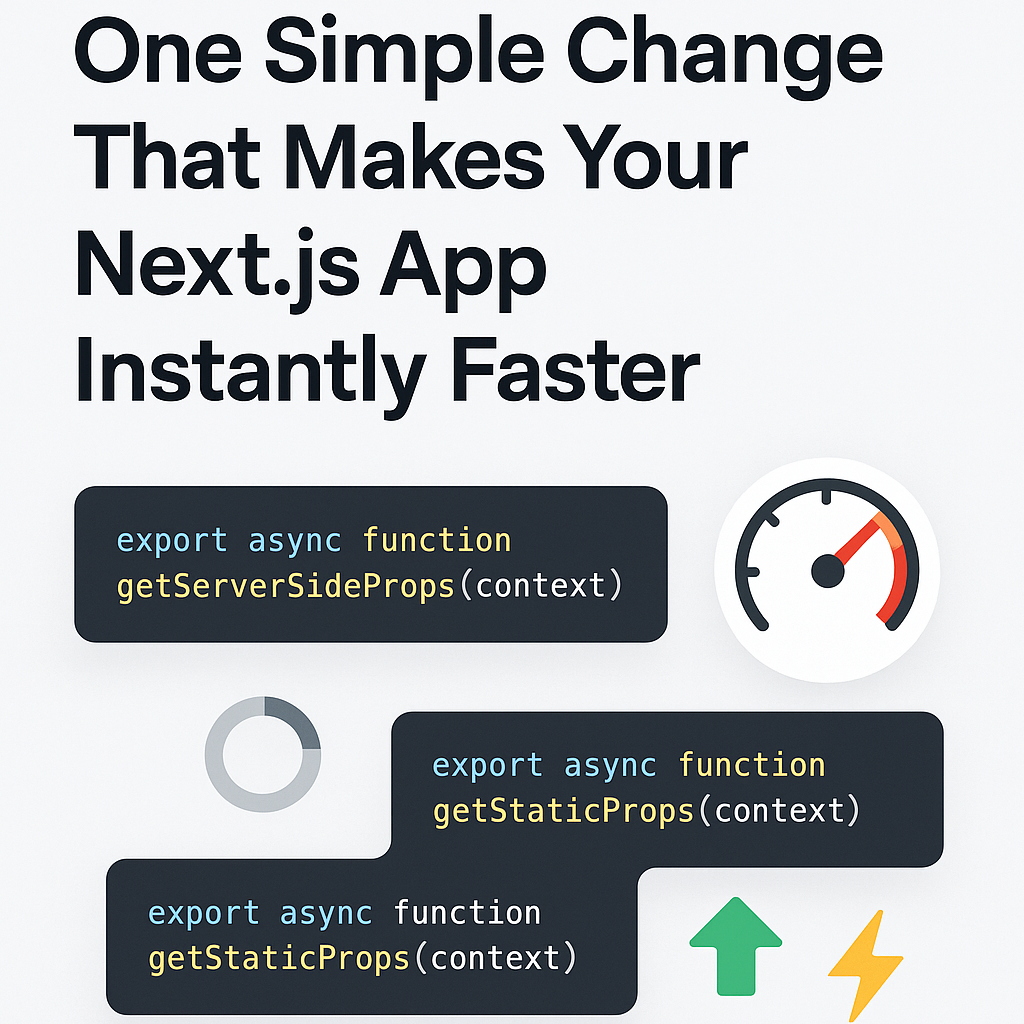Programming News
Dev
291

Image Credit: Dev
Art of Error Handling Complete Solution from Panic to Graceful Degradation(1751460655872300)
- Junior computer science student shares transformation in understanding web framework development.
- Hyperlane framework in Rust offers performance and safety guarantees with zero-cost abstractions.
- Framework's design philosophy focuses on compile-time validation, eliminating runtime errors for robust applications.
- Features include context-driven architecture, middleware system, real-time communication, and performance optimization.
- Robust error handling, memory management, troubleshooting insights, and production best practices discussed.
Read Full Article
17 Likes
Logrocket
283

Image Credit: Logrocket
Pivot or perish: Why product agility determines market survival
- Failed tech products like Nokia and BlackBerry highlight the importance of product agility.
- Success breeds complacency, leading to faster product deaths than bad code or design.
- Case studies of successful pivots by companies like Microsoft, Apple, and Nintendo are discussed.
- Tips for product managers on recognizing when to pivot to ensure market survival.
- Building agility and staying ahead is crucial for continuous product success and market leadership.
Read Full Article
17 Likes
Medium
53

Image Credit: Medium
One Simple Change That Makes Your Next.js App Instantly Faster
- Launching a Next.js blog can lead to server overload and slow performance.
- By switching from getServerSideProps to getStaticProps, you can boost performance significantly.
- Static rendering reduces server workload, speeds up load times, and handles traffic spikes.
- For user-specific or frequently updated data, server-side rendering remains essential for fresh content.
- Using getStaticProps early on can prevent launch issues and enhance user experience.
Read Full Article
3 Likes
Medium
199

The Truth About Changing Careers While Working a Full-Time Job — My Story with Jivora
- Changing careers while working full-time is a challenging journey that demands discipline, sacrifice, and resilience.
- Jivora offers flexible and practical business analytics courses designed for busy professionals, focusing on real-world applications and providing interactive learning experiences.
- Jivora's self-paced courses, supportive community of learners and mentors, and focus on building a portfolio of projects help individuals like the author gain confidence and relevant skills for career transitions.
- The author's success story showcases how combining structured routines, personalized guidance, practical learning, and determination can lead to a fulfilling career change into data analytics without quitting a current job.
Read Full Article
11 Likes
Discover more
- Software News
- Web Design
- Devops News
- Open Source News
- Databases
- Cloud News
- Product Management News
- Operating Systems News
- Agile Methodology News
- Computer Engineering
- Startup News
- Cryptocurrency News
- Technology News
- Blockchain News
- Data Science News
- AR News
- Apple News
- Cyber Security News
- Leadership News
- Gaming News
- Automobiles News
Analyticsindiamag
230

Image Credit: Analyticsindiamag
What Enterprises Get Wrong About Data Complexity and How to Fix It
- Enterprises struggle with managing data complexity, hindered by fragmented silos and outdated solutions.
- Shivani Bennur emphasizes open hybrid data lakehouse solutions like Trino for unified data access.
- Starburst offers a solution to data challenges through an analytics engine supporting open table formats.
Read Full Article
13 Likes
Medium
901

Learning Ruby: A Beginner’s Guide to the Basics
- Ruby is the language behind the popular web framework Ruby on Rails, suitable for general scripting and automating tasks.
- Variables in Ruby are written in snake case and can reference different objects over their lifetime.
- Constants in Ruby are assigned once, start with capital letters, and are normally written in block capitals with words separated by underscores.
- Methods in Ruby can be defined with positional arguments, keyword arguments, or no arguments at all, and return values based on the last evaluated statement or explicitly via the return keyword.
Read Full Article
17 Likes
Self-Learning-Java
287

Image Credit: Self-Learning-Java
Building a Moral Storytelling App with LangChain4j, Spring Boot, and Ollama by setting system message using @SystemMessage annotation
- Combine modern frameworks with traditional wisdom for an engaging storytelling app.
- Create a Spring Boot app using LangChain4j and Ollama for intelligent storytelling.
- Utilize @SystemMessage to inject a storytelling persona and guide AI responses.
- Learn how to set up the project, configure system messages, and run the application.
- Enhance storytelling with AI by specifying context and maintaining a consistent persona.
Read Full Article
17 Likes
Alvinashcraft
188

Dew Drop – July 2, 2025 (#4451)
- Top stories include updates on Uno Chefs, RunAs Radio, GitHub Copilot.
- Articles cover ASP.NET Community Standup, .NET Maui, AI trends, and more.
- Topics range from cloud development and WinUI to AI insights and podcasts.
Read Full Article
11 Likes
Self-Learning-Java
199

Image Credit: Self-Learning-Java
Core Concepts of Apache Pinot
- Apache Pinot is a real-time OLAP datastore with core components explained here.
- Components include Tables, Segments, Schema, Servers, Brokers, Controllers, and Tenants.
- Table types, segment management, schema definition, servers' roles, and query handling discussed.
- Pinot's cluster structure, key responsibilities, and benefits of using tenants outlined.
Read Full Article
12 Likes
Dev
276

Image Credit: Dev
React Suspense and Concurrent Mode-The Future of Asynchronous Rendering
- React 16.8 introduced Suspense and Concurrent Mode for asynchronous rendering enhancement.
- Suspense manages asynchronous data loading with fallbacks until components are ready to render.
- Concurrent Mode optimizes UI by scheduling rendering tasks efficiently for better user experience.
- Combining Suspense and Concurrent Mode improves resource loading, error handling, and state management.
Read Full Article
16 Likes
Self-Learning-Java
215

Image Credit: Self-Learning-Java
Apache Pinot Architecture
- Apache Pinot is a distributed system for real-time data analysis.
- It stores data in columns, boasts smart indexing, and can handle huge volumes.
- Key components include Controller, Broker, Server, Minion, and Segment Store.
Read Full Article
12 Likes
Medium
26

Image Credit: Medium
This Course at Jivora Didn’t Just Teach Me Analytics — It Rewired How I Think
- A course at Jivora transformed the author's perspective on data, shifting from viewing it as mere figures to understanding it as a dynamic story waiting to be uncovered.
- The course focused on developing key mindsets including investigative curiosity, open-minded exploration, growth mindset, cognitive tolerance, and effective communication of data insights.
- Jivora's approach helped the author identify trends, make informed decisions, collaborate effectively, and continuously improve in the field of business analytics.
- The course stood out for non-tech learners by offering foundational skills in data analysis and business analytics through practical examples and interactive exercises, fostering a culture of curiosity and inquiry.
Read Full Article
1 Like
Dev
311

Image Credit: Dev
20+ Free & Responsive React Website Templates to Use
- Free React website templates save time with ready-to-use components, modern designs.
- Templates are developer-friendly, customizable, and ideal for MVPs and side projects.
- Features of top free React templates for efficient, professional website creation in 2025.
Read Full Article
18 Likes
Dev
99

Image Credit: Dev
Starting Small, Dreaming Big: My LN247 Talk on Building Tech Startups in Nigeria
- The article discusses a talk on building tech startups in Nigeria by a co-founder of Codesphere Academy and Codesphere Nexus.
- Key insights shared include starting small, leveraging cloud solutions, turning constraints into advantages, and the rise of tech in Nigeria.
- One highlight was a discussion on cloud replication strategies using a real-world example from the Iran-Israel war.
- The article encourages African developers and founders to see their background as a unique advantage and to take steps towards their big dreams.
Read Full Article
6 Likes
Dev
80

Image Credit: Dev
Memory Leak Terminator How Type Safety Saved My Graduation Project(1751453256722600)
- Transformation in performance development understanding through Hyperlane framework exploration as a student.
- Type safety and zero-cost abstractions in Rust-based Hyperlane framework for robust web services.
- Context-driven architecture, middleware system, real-time communication, performance optimization, and memory management.
- Best practices, error handling, troubleshooting, and future directions in Hyperlane framework development.
- Exceptional performance, developer experience, production readiness, and ecosystem integration key takeaways.
Read Full Article
4 Likes
For uninterrupted reading, download the app